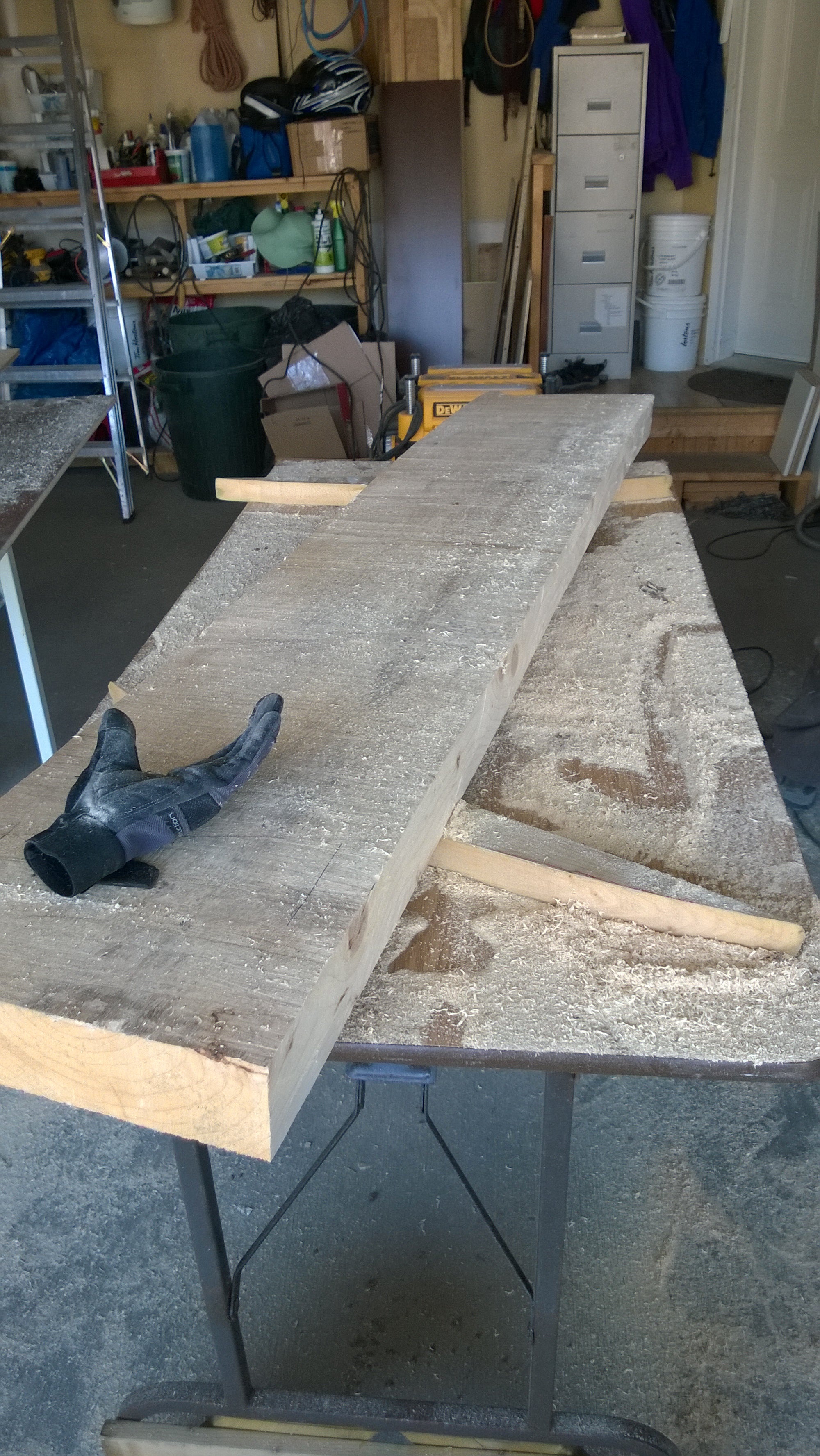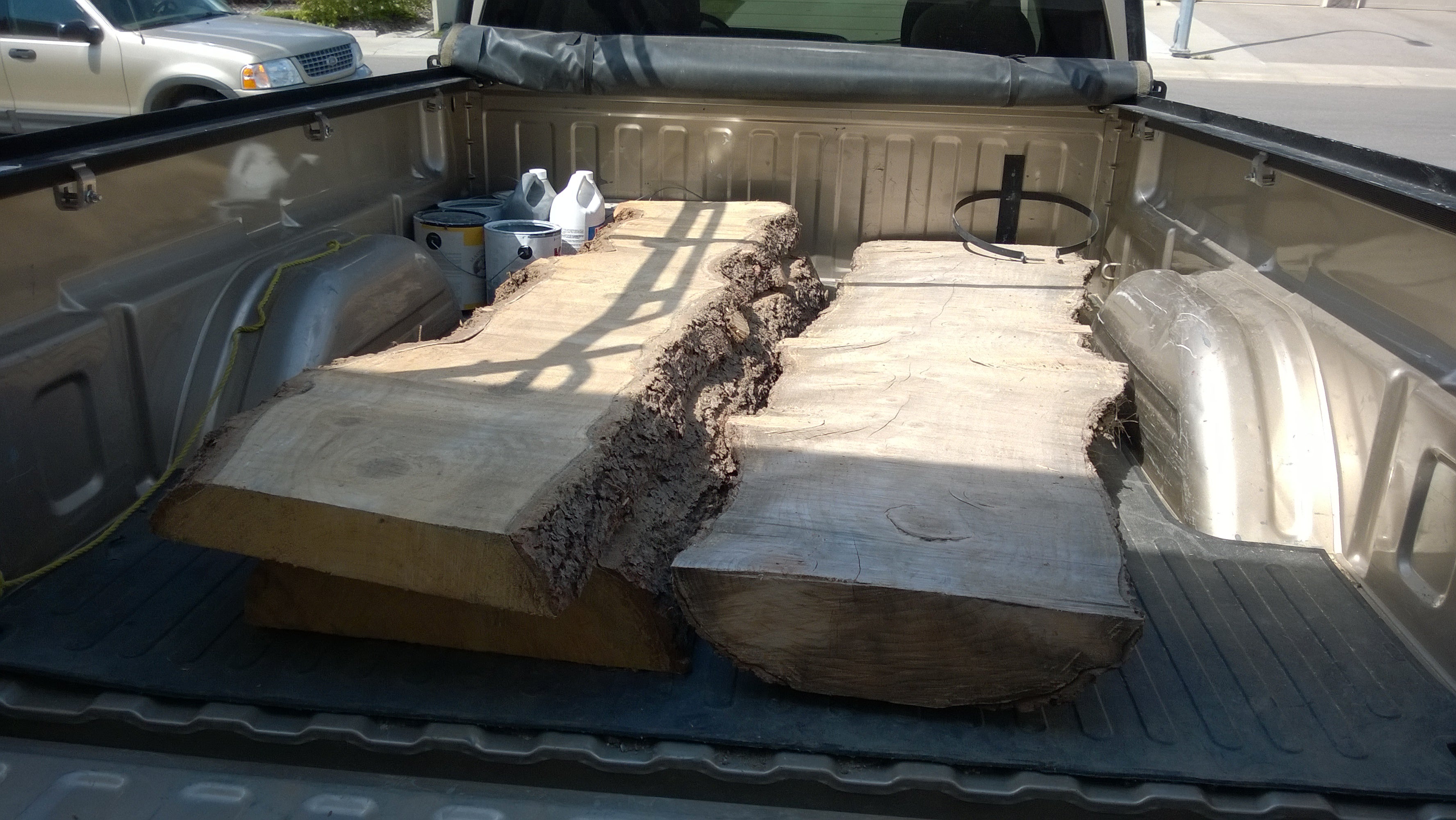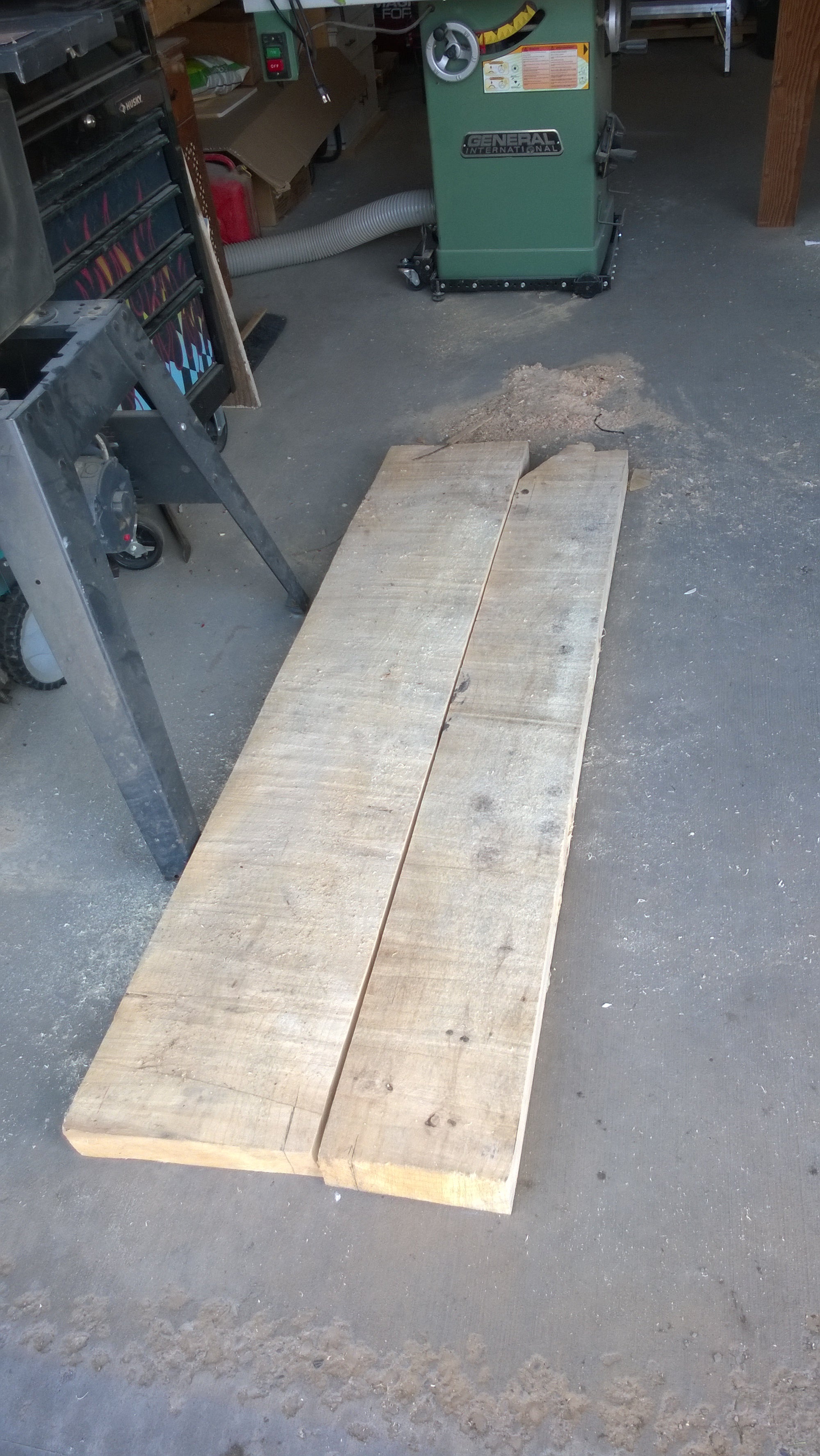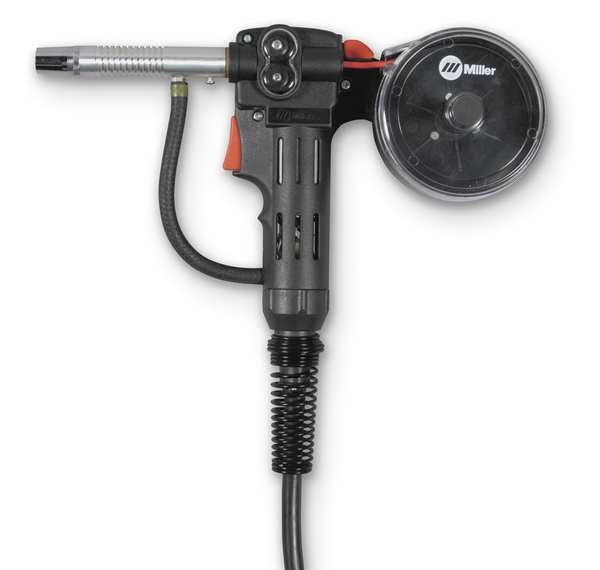 "BaconSandwich is tasty." (baconsandwich)
"BaconSandwich is tasty." (baconsandwich)
05/28/2015 at 10:07 ē Filed to: None
 1
1
 30
30
 "BaconSandwich is tasty." (baconsandwich)
"BaconSandwich is tasty." (baconsandwich)
05/28/2015 at 10:07 ē Filed to: None |  1 1
|  30 30 |
Iíve been trying to read up as much as possible about TIG welding aluminum, and some of the issues that are encountered. From what Iíve seen, there seems to be a general fear of doing it, for a few different reasons:
It behaves differently than welding steel.
The welding equipment can be quite a bit more expensive.
Itís not difficult to make a joint that cracks and breaks.
Aluminum itself may fail earlier than a similar part made of steel.
It takes a bit more coordination than something like MIG welding.
Given how many vehicles are now being made out of the stuff (and how many more will be made from it in the future), Iíd think that knowing how to weld it would be a very handy skill to have. That, and Iíve got a few personal projects that would involve fastening together some bits of aluminum.
So far, my only experience with it is from a few years ago in a welding lesson I got from an uncle. We cut and re-welded a section of aluminum irrigation pipe. Iím hoping to get a few more lessons in the near future, and maybe eventually purchase my own equipment.
To counteract the above points:
Yes, aluminum behaves differently than steel. The puddle flows differently. From what Iíve read, if a person starts with aluminum, you donít really have to un-learn what youíve done with steel.
Yes, the equipment is more expensive, but there seems to be some pretty decent lower-cost options out there, like this guy: !!!error: Indecipherable SUB-paragraph formatting!!!
To prevent cracking/breaking joints, it seems like thereís a few things that are critical: surface prep (removing as much aluminum oxide as possible using a stainless steel brush, then rubbing down with acetone or alcohol), using the right tungsten (100% tungsten, not thoriated, if using alternating current), using the right gas (100% argon), slowly tapering off the arc when stopping a joint, etc.
Aluminum fatigue is a real thing - just ask anyone who works with airplanes. Part of avoiding this comes down to the design of whatever it is you are making, and knowing that it isnít going to last forever. Not everything can or should be made from aluminum.
Yes, it takes more coordination, and thus, is going to take a lot more practice. Having also tried stick and MIG welding, I can say that MIG seems by far the easiest.
So Oppo, Iím wondering - does it sound like Iím about on track, or am I completely out to lunch? Am I completely underestimating how difficult it is to work with aluminum?
 PowderHound
> BaconSandwich is tasty.
PowderHound
> BaconSandwich is tasty.
05/28/2015 at 10:13 |
|
No idea. But if you want a project, I have a suspension component on my Mtn bike that broke an aluminum weld and needs fixing. :)
 MasterMario - Keeper of the V8s
> BaconSandwich is tasty.
MasterMario - Keeper of the V8s
> BaconSandwich is tasty.
05/28/2015 at 10:14 |
|
The little bit that I have TIG welded I thought it was fairly easy, there's much more control of the weld with TIG. As far as aluminum weld joints being more prone to cracking I'm not sure about that as nothing I've welded with TIG has really been a structural member
 Alfalfa Romeo
> BaconSandwich is tasty.
Alfalfa Romeo
> BaconSandwich is tasty.
05/28/2015 at 10:14 |
|
Youíve just about summed it up, I think. That being said, my metallurgy expertise is more in the machining realm, so there may be additional insight from the professional welders around here.
 Party-vi
> BaconSandwich is tasty.
Party-vi
> BaconSandwich is tasty.
05/28/2015 at 10:15 |
|
Why not MIG weld it instead? Usually you buy an adapter for aluminum to use with your existing MIG welder. Works pretty well.
Sauce: MIG-welded aluminum bits on the Willys
 Racescort666
> BaconSandwich is tasty.
Racescort666
> BaconSandwich is tasty.
05/28/2015 at 10:17 |
|
I think a lot of fears about welding aluminum are brought on by people who MIG weld like theyíre using a glue gun. Welding is absolutely a skill and if you take the time to get good at it, you can do it properly.
 Snuze: Needs another Swede
> BaconSandwich is tasty.
Snuze: Needs another Swede
> BaconSandwich is tasty.
05/28/2015 at 10:23 |
|
Iím a self taught welder - I do it very infrequently, but I can do it. My joints donít always look the best but they hold up. Iíve mostly done MIG but have done a little TIG, including a few small aluminum pieces. So this is by no means an expert opinion, but youíre pretty much spot on.
You nailed all the bits on aluminum welding - surface prep, using the right electrode and gas, right temperature/current setting, etc. You need to be bang on with all this stuff to get a good weld.
Aluminum fatigues if itís cyclically loaded, itís inevitable. For the most part itís fine in static loading situations, as long as itís properly treated (anti-corrosion coatings, etc.), but where you run into trouble is when itís used in a part that will be repeatedly loaded and unloaded.
 BaconSandwich is tasty.
> PowderHound
BaconSandwich is tasty.
> PowderHound
05/28/2015 at 10:25 |
|
One of the things Iíd like to make myself is a new desk - a flat sheet of carbon fiber on top, with aluminum aircraft style braces for the legs. Imagine sort of a C shape - that way I can swing my legs out from under the desk, I wonít hit them on the legs of the desk. Aluminum, because itíd be nice and light when it comes time to move it. And carbon fiber because it is something else Iíve been wanting to learn to work with.
 BaconSandwich is tasty.
> MasterMario - Keeper of the V8s
BaconSandwich is tasty.
> MasterMario - Keeper of the V8s
05/28/2015 at 10:26 |
|
To me, it just seems like so much cleaner of a process - thereís no slag to scrape off the weld, and no marks from splattering or smoke (if done correctly). That alone, in my mind, makes it so much more appealing.
 BaconSandwich is tasty.
> Alfalfa Romeo
BaconSandwich is tasty.
> Alfalfa Romeo
05/28/2015 at 10:28 |
|
Thatís still pretty awesome. Are you a machinist by trade?
I know there are a few welders around on Oppo.
 PowderHound
> BaconSandwich is tasty.
PowderHound
> BaconSandwich is tasty.
05/28/2015 at 10:28 |
|
Sounds amazing. Can't wait to see it! Do it! Do it! Do it!
 BaconSandwich is tasty.
> Party-vi
BaconSandwich is tasty.
> Party-vi
05/28/2015 at 10:29 |
|
Itís certainly possible, but it doesnít seem to leave quite the same quality of weld. The first part of the weld often doesnít have enough heat, so the bead sits on top of the surface. By the end of the bead, the weld definitely has enough heat, but the sudden stopping of the arc can cause cratering. Often what theyíll do is have a tab at the start and end of the weld that can be cut off, leaving only the nice part of the weld. Sometimes that isnít an option, though.
 BaconSandwich is tasty.
> Racescort666
BaconSandwich is tasty.
> Racescort666
05/28/2015 at 10:30 |
|
I think there might be a certain amount of truth to that - people are afraid of what they donít know, and of whatís different.
 Alfalfa Romeo
> BaconSandwich is tasty.
Alfalfa Romeo
> BaconSandwich is tasty.
05/28/2015 at 10:30 |
|
I was, and I plan to be again soon. I moved to a desk job almost 2 years ago, but Iím looking to get back in the shop.
 BaconSandwich is tasty.
> Snuze: Needs another Swede
BaconSandwich is tasty.
> Snuze: Needs another Swede
05/28/2015 at 10:32 |
|
Thatís one thing I havenít done a lot of reading on - anti-corrosion coatings. I imagine there are special paints/clear-coats out there for aluminum in particular?
It does make me wonder, though - with certain car parts like control arms - is there anyone that uses aluminum? Given something like a Lotus Exige, from what I understand the bulk of the car is aluminum. It makes me wonder how things like strut towers hold up in the long run.
 dogisbadob
> BaconSandwich is tasty.
dogisbadob
> BaconSandwich is tasty.
05/28/2015 at 10:51 |
|
I wish I knew how to weld!
 BaconSandwich is tasty.
> Alfalfa Romeo
BaconSandwich is tasty.
> Alfalfa Romeo
05/28/2015 at 10:52 |
|
Thereís something to be said about making stuff with your hands (or using your hands to make machines make stuff for you). I think thatís why Iíve taken up woodworking in my ďspareĒ time.
 Snuze: Needs another Swede
> BaconSandwich is tasty.
Snuze: Needs another Swede
> BaconSandwich is tasty.
05/28/2015 at 10:53 |
|
Yes, there are. Donít know a whole lot about them and it can depend a lot on the application. Powder coat is pretty typical, though lately Iíve been increasingly interested in ceramic coatings. I have a buddy who is a gunsmith and is a certified Cerakote... ummm... applier? Painter? I dunno, but that stuff is incredibly tough and durable and very good at resisting corrosion.
I know Subaru did aluminum lowers on the WRX for like 2 years. The problem is, thatís both a very high stress and very high cyclic rate application. There are ways to calculate the time to failure for aluminum parts in terms of number of cycles and amplitude of cycles. For something like that you just overbuild the shit out of it, design it to last 1 billion cycles or something. But in doing that you lose a lot of the strength:weight advantage of aluminum and end up with something thatís almost as heavy as a steel part and generally very bulky.
Also, fun fact, Lotus Elise/Exige chassis are glued together. Some of the modern epoxies approach the strength of low grade aluminum, which makes it feasible to glue aluminum. This works especially well for large sheets, etc, where you have big, wide load paths. You can epoxy steel parts together but the epoxy is always much weaker, so you always know where your failure point will be. So Lotus uses the ďglue Ďn screwĒ method - lots of epoxy and 28 special ďshear-flowĒ screws, which help with the bonding and act as load paths, but mainly are just there to ensure the parts are located correctly and donít shift as the epoxy cures.
The reason they did this is that aluminum (all metals, really) weaken around the weld. The weld itself is super strong, usually as strong or stronger than the bulk material because it develops a very fine grain structure. But the area around the weld the grain structure gets distorted from the heat and it weakens the metal. Thatís why if something welded breaks, it typically breaks near the weld, not on the weld line itself (unless it was a shitty weld and didnít get good penetration). You can overcome this by heat treating the final product, which will create a uniform grain structure throughout the part. But its very time consuming - there are limits to the heating rate and cooling rate you can apply depending on the grain structure you want to end up with. Iím takling hours here, maybe up to a day. And youíd need a very large oven to accommodate a car chassis. So Lotus did the math and figured out they could get the strength they needed at a fraction of the price using the glue n screw method.
 Snuze: Needs another Swede
> dogisbadob
Snuze: Needs another Swede
> dogisbadob
05/28/2015 at 10:55 |
|
Buy one and do it. Thatís how I started. You can pick up a decent MIG box pretty cheap these days. They arenít great for aluminum, but youíre set for steel.
 BaconSandwich is tasty.
> PowderHound
BaconSandwich is tasty.
> PowderHound
05/28/2015 at 10:56 |
|
Itís on my mental list. If it does happen, itíll be after I finish the dining room table that Iím currently working on.



 Alfalfa Romeo
> BaconSandwich is tasty.
Alfalfa Romeo
> BaconSandwich is tasty.
05/28/2015 at 10:57 |
|
Or punching in code to a machine, and watching as it does everything for you just as you told it :)
 BaconSandwich is tasty.
> Alfalfa Romeo
BaconSandwich is tasty.
> Alfalfa Romeo
05/28/2015 at 11:04 |
|
I spent way too many hours babysitting a 3D printer during my masters.
That being said, I totally want to make my own CNC machine powered by a Raspberry Pi, and use it for milling down blocks of foam to make my own molds for vehicle body panels. I trust a machine to be able to make two nearly-identical pieces more so than I trust my own skills.
 BaconSandwich is tasty.
> dogisbadob
BaconSandwich is tasty.
> dogisbadob
05/28/2015 at 11:06 |
|
I certainly donít have much in the way of experience, but Iím trying to learn as much as I can about it. Iíve been watching way too many YouTube videos of it, and I finally need to get out there and get some lessons!
 Frank Grimes
> BaconSandwich is tasty.
Frank Grimes
> BaconSandwich is tasty.
05/28/2015 at 11:44 |
|
I have tig welded a bit of aluminum. It really is more difficult than steel but steel doesnt seem to be a s sensitive to dirt and contamination. Also steel will glow when melting aluminum doesnít. When things went well and I made some good aluminum welds I felt like a welding pimp but when things didnít go well I wasnít experienced enough to diagnose what was going on and it was really frustrating.
MIG welding is possible with aluminum and it is done all the time in manufacturing. If you have a MIG you have to change the feed rollers I think and the liner for the gun. Most that do it alot will use a welding gun that has the feed right in the gun because the aluminum wire is so soft and will get all tangled and bent.

 uofime-2
> BaconSandwich is tasty.
uofime-2
> BaconSandwich is tasty.
05/28/2015 at 12:25 |
|
fun related aluminum story, I was having a wing support structure I designed welded together, it consisted of 3 long spars with ribs for mounting in the middle and ends. We had fixtured the structure down to a chassis table to keep it from deforming during welding however the welder got a little impatient and did some long beads on the ribs in the middle as a result of the amount of heat he put into the work piece and the fixturing we actually caused one of the spar tubes to buckle and snap!
Morale of the story: you have to be really careful how much heat you put into aluminum while you weld it, it has a CTE 3x as large as steel, it will deform more than you expect, enough to break itself in fact
 BaconSandwich is tasty.
> Snuze: Needs another Swede
BaconSandwich is tasty.
> Snuze: Needs another Swede
05/28/2015 at 13:13 |
|
The ďglue and screwĒ method doesnít actually surprise me too much. After watching how the BMW i3 is made, itís amazing to see how much of that vehicle is held together with nothing but adhesives.
Thatís pretty interesting about the crystallization around welds. I do recall hearing that Ford had developed some interesting techniques for working with their new aluminum F-150 bodies. I also recall hearing that they rivet a very large number of the parts together. Iíll have to see if I can find the link on it.
 BaconSandwich is tasty.
> uofime-2
BaconSandwich is tasty.
> uofime-2
05/28/2015 at 13:15 |
|
Thatís pretty crazy. For some reason I had it in my head that it would actually deform less than steel. I know it conducts heat incredibly well.
That actually makes sense as well - when welding together two pieces, I wonder if it becomes overheated and is welded together in an expanded shape, it can crack/weaken the weld as it cools and contracts.
 Snuze: Needs another Swede
> BaconSandwich is tasty.
Snuze: Needs another Swede
> BaconSandwich is tasty.
05/28/2015 at 13:16 |
|
That would be interesting if you could. Another thing that I donít know a whole lot about but intrigues me is laser welding. Apparently it minimizes the heat application at the weld joint, so you end up with a very, very small heat affected zone. I wonder if Ford is using a similar technique on the F-150?
 BaconSandwich is tasty.
> Frank Grimes
BaconSandwich is tasty.
> Frank Grimes
05/28/2015 at 13:22 |
|
For a while I was looking at MIG welders that had aluminum reel guns. I think the reason they use it in some industrial processes is because it is a lot faster than TIG welding by hand. There are potential issues with it, though. Often there isnít enough heat at the start of the weld so the bead stays on the surface. At the end, when the arc is immediately cut, it can create what they call craters, which can act as a starting point for a crack. Often what theyíll do in industry is leave a tab at the start and end of the piece so that the ďbadĒ parts of the weld are cut off, leaving only the nice portion of the bead.
I still wouldnít mind giving MIG welding aluminum a try, though.
 BaconSandwich is tasty.
> Snuze: Needs another Swede
BaconSandwich is tasty.
> Snuze: Needs another Swede
05/28/2015 at 13:24 |
|
Not the exact link I remember, but similar content:
http://news.pickuptrucks.com/2014/04/rivetsÖ
I really havenít heard much about laser welding at all. It definitely sounds intriguing.
 Frank Grimes
> BaconSandwich is tasty.
Frank Grimes
> BaconSandwich is tasty.
05/28/2015 at 13:25 |
|
also robots can MIG.